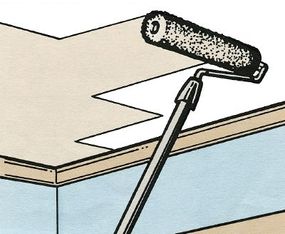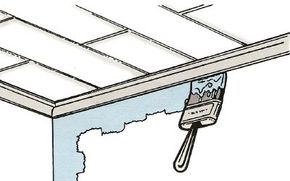How to Paint Walls, Ceilings, and Tight Spots
Since the walls and ceilings are the largest surfaces in a room, you'll devote a lot of energy to painting them. In this section, we'll tell you the best techniques for painting walls and ceilings, as well as the tight spots in between.
Walls
Advertisement
Paint an entire wall before taking a break so the painted portions won't lose their wet edges. Then stand back, scan the wall, and cover any missed spots or smears. Whether you paint in sections from top to bottom or from side to side across the room is up to you. But if you're using an extension handle on your roller, you may find it more convenient to start at one high corner and go all the way across the room with a series of completed zigzag patterns. This way you won't have to constantly change the handle on your roller as you would if you painted in sections from the ceiling down to the floor. If you're right-handed, start in the room's left-hand corner; if you're left-handed, start in the room's right-hand corner.
Ceilings
When rolling paint on a ceiling, maintain a wet edge at all times to avoid creating lines and ridges. If you're using fast-drying paint, you may have to work faster than you anticipated and without taking a break. Both speed and ease can be achieved by using an extension handle so you can paint from the floor instead of from a stepladder that has to be moved around the room. Many roller handles are made to accept a screw-in extension that you can buy at the paint store, but you may want to see if the threaded end of your broom or mop handle will work.

Tight Spots
You probably won't have enough room to use the zigzag technique described earlier over and under windows and above doors and doorways. Instead, just roll the paint on horizontally. For areas that are narrower than the standard 7- or 9-inch roller, use a 4-inch roller or a paintbrush. (The little roller is best because it will give you the same surface finish as the rest of the wall.) Brushes apply paint less evenly and tend to leave trails.
Now that we've covered the walls and ceilings, it's time to move onto the other parts of a room -- namely the trim, baseboards, wainscoting, windows, and doors.


